Papers by Marjeta Šašel Kos
Scrinia Slavonica : Godišnjak Podružnice za povijest Slavonije, Srijema i Baranje Hrvatskog instituta za povijest, Oct 15, 2015

Keria: Studia Latina et Graeca, Dec 15, 2001
Sveti kraji in avtohtona božanstva na jugovzhodnoalpskem prostoru-nekaj vidikov Geografsko ozadje... more Sveti kraji in avtohtona božanstva na jugovzhodnoalpskem prostoru-nekaj vidikov Geografsko ozadje V pozni bronasti dobi je jugovzhodnoalpski prostor zaradi večje poselitve in prihoda ljudstev, nosilcev različnih kultur, že postal neke vrste kulturna krajina.2 To se je kazalo, tako kot drugod v Evropi, tudi v tem, da so na nekaterih mestih nastajali sveti kraji, kjer naj bi bil vpliv božanstev in božanskih moči intenzivnejši kot drugod. 3 Jugovzhodnoalpski prostor je bil od nekdaj zelo heterogen, in to ne le geografsko, temveč tudi administrativno in kulturno. Obsegal je kraško zaledje Akvileje in Tergesta in se raztezal do gričev nate pokrajine ob Dravi in Panonske nižine, ki se je začenjala vzhodno od Ptuja. Na severu je vključeval Koroško, najugu Dolenjsko in Belo krajino. Administrativno je ta prostor pripadal deloma 1 O. italski regiji (poznejši Venetia et Histria), v katero je bila vključena tudi Emona in njen upravni teritorij, deloma je tod segala provinca Norik (Celeja, Virunum, Teurnia), deloma Panonija (Poetovio, Neviodunum). V poznolatenskem obdobju je bil večji del tega prostora pod vplivom Noriškega kraljestva. 4 1 (Besedilo je prirejeno iz avtoričine knjige Pre-Roman Divinities oj the Eastern Alps and

TYCHE – Contributions to Ancient History, Papyrology and Epigraphy, 2017
After Caesar’s murder, Decimus Brutus went to govern Cisalpine Gaul, which Antony legally exchang... more After Caesar’s murder, Decimus Brutus went to govern Cisalpine Gaul, which Antony legally exchanged for Macedonia. Decimus Brutus’ career is briefly discussed, as are the events, which postdated his refusal to surrender his province. The alliances at Mutina were unusual: the consuls Aulus Hirtius and Gaius Vibius Pansa, as well as Octavian, fought on the side of Decimus Brutus against Antony. The aftermath of Mutina and particularly the flight of Decimus Brutus are analysed in detail, as well as his death among the Sequani, whose dynast was Camilus. Appian’s (possible) sources and his reliability are discussed, particularly his use of the Memoirs of Augustus. Light is shed on the problem of how the artillery machines of Decimus Brutus’ army could have ended up at Metulum, the capital of the Iapodes. Keywords Appian; Decimus Brutus; Sequani; Iapodes; artillery machines

A lead tablet found in the Kupa River at Siscia (Pannonia, present-day Sisak) is a unique judicia... more A lead tablet found in the Kupa River at Siscia (Pannonia, present-day Sisak) is a unique judicial curse tablet, in which the river god Savus was invoked to harm the adversaries of the authors of the text. The inner side bears the names of their opponents involved in a lawsuit. Three adversaries are listed first: G. Domitius Secundus, Lucius Larcius, and Valerius Secundus, probably all from Cibalae (Pannonia, present-day Vinkovci). Other names include P. Caetronius and G. Corellius from Narbo (Narbonne) in Gallia and L. Licinius Sura from Hispania, as well as Lucilius Valens, who was very likely from Siscia, where the Lucilii are well documented. It is argued in the article that L. Licinius Sura should not be identified with the Roman senator from Tarraco and Trajan’s adviser and friend, but should rather be regarded as a homonymous person of a lower social standing, whose parents gave him the name Sura, considering it to be a good omen.
Studia Europaea Gnesnensia, 2017
The article comments on residents of Siscia attested outside the city and its territory. It is ba... more The article comments on residents of Siscia attested outside the city and its territory. It is based both on corpus of the Roman inscriptions from Siscia and inscriptions found elsewhere in the Roman Empire in which the Sisciani are documented. A few individuals, known from other provincial towns, were employed in municipal and provincial administration, while soldiers of various ranks predominate, legionaries as well as auxiliaries. Among them, soldiers serving in the Praetorian Guard are the best attested.
Emona ni bila nikoli mesto v provinci Panoniji; najprej je pripadala cisalpinski Galiji, od leta ... more Emona ni bila nikoli mesto v provinci Panoniji; najprej je pripadala cisalpinski Galiji, od leta 41 pr. Kr. pa Italiji. Mejnik iz Bevk, ki najverjetneje sodi v čas vladanja Avgusta ali morda Tiberija, je dokončno potrdil, da je bila Emona italsko mesto že v prvi polovici 1. stoletja po Kr., skoraj nedvomno pa je pripadala Italiji že pred tem. Obstoječi viri in arheološko gradivo ne omogočajo, da bi lahko opredelili natančen čas, ko je postala rimska kolonija. Predlagani časovni termini segajo od časa Oktavijana po bitki pri Akciju do začetka Tiberijevega vladanja. Ker so se dejansko vsi argumenti, s katerimi so dokazovali slednjo hipotezo, izkazali za napačne, je treba po vsej verjetnosti iskati terminus ad quem v času malo preden je Oktavijan postal Avgust, s čimer bi se dobro ujemalo tudi ime kolonije, Iulia.

Keria: Studia Latina et Graeca, 2000
Med bralci naše nove revije, kijih zanimajo klasična filologija, posebej grška in rimska literatu... more Med bralci naše nove revije, kijih zanimajo klasična filologija, posebej grška in rimska literatura ter vzporedno najrazličnejši vidiki naše preteklosti v antiki, bodo morda tudi takšni, ki jih zanimajo poganski kulti in božanstva, čaščena pri nas v dobi pred prevlado krščanstva. Zato sem se odločila, da vaje objavim v nadaljevanjih svoje besedilo o predrimskih kultih in božanstvih našega prostora in širše okolice. To besedilo je slovenska priredba angleške izdaje z naslovom Pre-RomanDivinities ojtheEasternAlps andAdriatic, ki je izšla spomladi leta 2000 kot monograftja serije Situla (št. 38, Ljubljana 1999). Ta muzejska serija je namenjena predvsem izmenjavi publikacij s tujino, zato je smiselno, da ni dvojezična. Slovensko besedilo začenjam s kratkim uvodnim sestavkom, sledili bosta dve nadaljevanji prvega poglavja (Od izvira Timava do Ekorne v Savariji: domača in uvožena božanstva) , ter vsa nadaljna poglavja, ki doslej še niso dostopna v slovenščini (Boginje Histrije in Liburnye...

War, conquest, and devastation are the main topics of Appian's Illyrian Historynot entertaining r... more War, conquest, and devastation are the main topics of Appian's Illyrian Historynot entertaining reading, but vivid and full of interest for a historian, and, alas, all too relevant. This book deals with some chapters from the ancient history of the eastern Alpine and Adriatic regions as well as the western Balkans. The entire area is mainly known under the name of the Balkans. The Balkans have always been a fascinating theme of study, and for those of us born here, an unavoidable destiny. Illyricum equals more or less the western Balkans, and an attempt has been made here to explain the elusive name 'Illyrian', with all its different meanings in different periods. The history of Illyricum was always complex, difficult, and problematic, often obscure. It has remained a difficult region, where even in the modern age problems are dealt with in wars. The name Balkan (a Turkish word for 'mountain') originally referred to Mt. Haemus, and it appeared for the first time in a memorandum written in 1490 to Pope Innocent VIII by the Italian diplomat Filippo Buonaccorsi Callimaco. The first, in 1808, to use the term 'Balkan Peninsula' was the German geographer August Zeune, who erroneously believed that this mountain chain joined the Alps in the northwest in the Istrian Peninsula. The exact meaning of 'the Balkans', i.e. the mountain range extending from the Timok Valley to the Black Sea, is known only to the rare, the geographic error prevailed, and the word has since acquired various connotations, mainly in a pejorative sense, including the expression 'balkanization', implying the prospect of an imminent disaster. 1 Who would dare cope with the Balkans in any period? Some did: the best authority on the central Balkans in antiquity was Fanula Papazoglu, whose knowledge on the matter was unsurpassed. The linguistic, onomastic, and historical studies of Radoslav Katičić, in particular his Illyricum mythologicum, illuminate many aspects of the more obscure Balkan and Dalmatian past. After having submitted the manuscript on Cassius Dio, Herodian, and Western Illyricum to the publisher, I had hoped to continue more intensively my work on Appian's Illyrica. As early as 1982, I wrote an interim report for the project titled Appian and Illyricum, but due to discontinuous research, twenty-three years were to pass before it appeared as a book. It can only be hoped that for an equal number of future years-and hopefully more-the book may serve as a modest guide to all those who will concern themselves with either Appian or Illyricum. It was necessary to restudy and rewrite most of what had been written at an early date; many important articles and books on Appian and on Illyricum have been published in recent years, in particular in 2004, perhaps as a sign that less than expected had been done on the subject in the past. Eventually, many parts of the text written earlier were left out, as well as most of the earlier bibliography, in order to make the book more pertinent, more readable, and not overburdened with footnotes. Throughout these years, I was fortunate enough to spend several weeks at the Kommission für Alte Geschichte und Epigraphik in Munich, thanks to the generous hospitality of its director Michael Wörrle and other colleagues. In their library (Regina Gruber), in ours (Primož Pavlin, Drago Samec), as well as the library of the National Museum of Slovenia (Anja Dular), I was given great help with articles and books that were difficult of access. There are many to whom I would like to express my gratitude for having aided me in my research. These are first of all my colleagues at the Institute of Archaeology, the Research Centre of the Slovenian Academy of Sciences and Arts (in particular Dragan Božič, Slavko Ciglenečki, Janez Dular, Jana Horvat, Primož Pavlin), and the Coin Cabinet of the National Museum of Slovenia (Andrej Šemrov), who showed generous understanding for all my time spent on the project and in various ways supported my work. Mateja Belak made most of the maps and took care of all the illustrations. Oto Luthar, the director of the Research Centre, should be thanked for financial support for the publication, and encouragement. Thanks are due to Barbara Smith-Demo for her advice on various matters, and to my Croatian colleagues (Slobodan Čače, Siniša Bilić-Dujmušić, Anamarija Kurilić, Darko Periša, Joško Zaninović), who kindly accompanied me on my Appianic journeys, discussing with me their views about past events. I would very much like to thank Gëzim Hoxha (for advice on photographs and the correct spelling of Albanian geographical names), Tinka Selič (for help with eliminating errors and inconsistencies in the bibliography), and David Movrin (for technical help with the Greek text). Most of all I would like to thank those colleagues who very kindly read single chapters of the book, offering valuable criticism, suggesting various corrections, and making useful observations. Sincere thanks are due to
Thirteen Roman inscribed stone monuments (as well as one fragment short of an inscription), are i... more Thirteen Roman inscribed stone monuments (as well as one fragment short of an inscription), are immured in the Ljubljana cathedral (1701-1706) and seminary building (1708- 1713). They are also referred to as the Thalnitscher Lapidarium. These are primarily Roman tombstones discovered at Ig or Ljubljana (Emona), two of which are most probably counterfeit, while one is a dedication to Hercules. A small fragment lacking an inscription may have belonged to an altar.Avtorica v članku objavlja s fotografijami trinajst rimskih kamnov z napisi in enega brez napisa, ki jih je dal Janez Gregor Dolničar (1655-1719) vzidati v tedaj novozgrajeno stolnico (1701-1706) in semenišče (1708-1713). Večinoma gre za rimske nagrobnike, najdene na Igu ali v Ljubljani (Emoni), od katerih sta dva prejkone ponarejena, eden je posvetilo Herkulu, odlomek brez napisa pa je verjetno del oltarja

In the summer of 2001, a boundary stone between Aquileia and Emona, made of Aurisina/Nabrežina li... more In the summer of 2001, a boundary stone between Aquileia and Emona, made of Aurisina/Nabrežina limestone, was discovered in the bed of the Ljubljanica River below Bevke, some 13 km to the southwest of Ljubljana. It is most probably dated to the Augustan period and is certainly pre-Claudian. According to other similar boundary stones, neither of the two communities involved could be subordinate to the other and both belonged to the same administrative unit. This means that both towns belonged to Italy and that Emona had never been part of Illyricum (or, later, of the province of Pannonia).V strugi Ljubljanice pod Bevkami je bil poleti 2001 najden mejnik med Akvilejo in Emono, izdelan iz nabrežinskega apnenca. Datacija mejnika je predklavdijska, najverjetneje je iz avgustejske dobe. Sodeč po drugih znanih mejnikih sta imeli na njem omenjeni mesti enakovreden pravni položaj in sta pripadali isti administrativni enoti. Mejnik torej dolazuje, da Emona ni nikoli pripadala Iliriku oz. pozn...

Das ganze in Betrachtung gezogene Gebiet war Teil der griechisch sprechende Hemisphäre, von hoher... more Das ganze in Betrachtung gezogene Gebiet war Teil der griechisch sprechende Hemisphäre, von hoher Kultur zwar, jedoch im Gefüge des römischen Imperiums politisch und wirtschaft lich von geringer Bedeutung. Die alten griechischen Städte-poleis-lebten unter Rom nach alten Einrichtungen weiter, sie waren zwar keine politischen Einheiten mehr, behielten aber eine relativ autonome, auf alten Grundlagen errichtete Stadtorganisation bei (vgl. TffTopia. toü èk.Xrivixoù fölvoux;. Tópoq ZT': sAZrivurpi? xal 'Ptbpn (30 n. X.-324 p. X.), Athen 1967 [Autorenkollektiv]). Ein schönes Beispiel griechischen Stadtlebens während der römischen Ära ist Chaironeia zur Zeit Plutarchs, oder Hypata in Metamorphosen des Lukianos. Doch blühten wegen des immer grösseren ökonomischen Verfalls (für die wirtschaftliche Entwicklung der römischen Provinz Achaia ist noch immer grundlegend U. Kahrstedt, Das wirtschaftliche Ge sicht Griechenlands in der Kaiserzeit [Diss. Bernenses I, 7, 1954], der auch möglichst viel vom 252 A rheološki vestnik 31 (1980)
Studia mythologica Slavica, 2015
Keria: Studia Latina et Graeca, 2002
Municipium Claudium Celeiaje skupaj s štirimi drugimi noriškimi naselbinami, ki jih Plinij imenuj... more Municipium Claudium Celeiaje skupaj s štirimi drugimi noriškimi naselbinami, ki jih Plinij imenuje oppida ( Virunum, Teurnia, Aguntum in Iuvavum, N. h. 3.146), dobil pravice rimskega municipija pod Klavdijem. Celeja je bila eno najbolj cvetočih mest v Noriku in tudi eno od pomembnih provincialnih administrativnih središč; že pred tem je bila močna keltska naselbina, njeni prebivalci so bili keltski Tavriski. Tavriski so najkasneje v l. stol. pr. Kr. kovali svoj lasten denar (tako imenovane vzhodnonoriške oz. tavriskijske srebrne in tudi zlate novce) in si prizadevali doseči čim več neodvisnosti v okviru Noriškega kraljestva, v katerem so igrali najpomembnejšo vlogo Noriki, ki so kovali svoj denar na Koroškem (t.i. zahodnonoriški novci oz. novci Norikov), krožil pa je tudi na sosednjih območjih.

Keria: Studia Latina et Graeca, 2010
V članku so zbrana in komentirana tista mesta v Strabonovi 7. knjigi, kjer piše o Donavi in Savi.... more V članku so zbrana in komentirana tista mesta v Strabonovi 7. knjigi, kjer piše o Donavi in Savi. Že Herodot je Donavo opredelil kot najpomembnejšo njemu znano reko; pri grških piscih se je zanjo uveljavilo tračansko ime Istros, ki se je tudi pozneje uporabljalo za spodnji tok Donave. Zgornji tok se je imenoval Danuvius/Danubius, ime je verjetno keltsko. Kot božanstvu so Danuviju postavljali oltarje; blizu sotočja Drave in Donave so skupaj z njim počastili tudi boga Drava. Savo je poosebljal bog Savus, ki so ga častili ob zgornjem, nevarnejšem toku reke do Siscije. Skupaj z Adsaluto sta imela svetišče nad brzicami pri Podkraju nasproti Hrastnika, blizu območja nevarnih slapov. Strabon poleg drugih rek dvakrat omenja sicer neznani Noar, ki so ga enačili s celo vrsto rek, med drugim tudi z Odro, vendar je natančna analiza Strabonovega besedila pokazala, da gre lahko le za spodnji tok Save. Izviri Save Dolinke v Zelencih pri Podkorenu so bili sveti kraj, kjer so častili Saverkno.
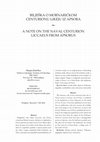
Nadgrobna stela Likeja (Liccaeus), sina Vejova, centuriona liburne Lucusta, izložena je u lapidar... more Nadgrobna stela Likeja (Liccaeus), sina Vejova, centuriona liburne Lucusta, izložena je u lapidariju u Osoru (Apsorus) na otoku Cresu (Crexi). Bila je objavljena više puta, ali ni jedna od tih objava nije uzela u obzir sve raspoložive podatke o mjestu njezina nalaska. Likej i njegov nasljednik Dabal (Dabalus), sin Tritov, vjerojatno nisu pripadali starosjedilačkom stanovništvu otoka, već su mogli potjecati s delmatskog područja. Ipak, Likej je morao biti istaknuta osoba u Apsoru jer mu je bilo dodijeljeno javno zemljište za njegov pogreb. Njegov je nadgrobni spomenik pronađen u Osoru, a ne u Punti Križa, selu udaljenom kojih 15 km južno od Osora.The funerary stele of the centurion from the liburna Lucusta, Liccaeus, son of Veius, is exhibited in the lapidarium at Osor (Apsorus) on the island of Cres (Crexi). It has been published several times but no publication took into account all available data concerning its site of discovery. Liccaeus and his heir Dabalus, son of Tritus, proba...

Studia mythologica Slavica
There are two interesting cases of the worship of Roman period deities in the north-eastern Itali... more There are two interesting cases of the worship of Roman period deities in the north-eastern Italian and Pannonian regions, which in one way or another seem to have survived through the early medieval to modern times. The first is the cult of Belenus, the well-known Celtic and most notably Norican and Aquileian god. The second case is that of Cybele and Attis, the so-called eastern deities, whose cult became highly influential in the mentioned areas – as well as elsewhere – in the second and third centuries AD. Interestingly, a deity called “holy Belin” was documented in the second half of the 19th century in the area of Tolmin in Slovenia (the hinterland of Aquileia), as a traditional folk belief. In Pannonia, traces of the cult of Cybele and Attis seem to have survived from antiquity in Prekmurje and Porabje (Slovenia, Hungary), reflected in the unusual and still existing custom of the “wedding with a pine-tree”.

DOAJ (DOAJ: Directory of Open Access Journals), Oct 12, 2019
Mitradat VI. Evpator (120-63 pr. Kr.), najpomembnejši kralj Ponta v Mali Aziji, je osvojil bospor... more Mitradat VI. Evpator (120-63 pr. Kr.), najpomembnejši kralj Ponta v Mali Aziji, je osvojil bosporsko kraljestvo in večino dežel ob Črnem morju vključno s Kolhido, priključil svojemu kraljestvu Kapadokijo in Bitinijo ter širil oblast tudi drugod po Mali Aziji in Grčiji. Bil je eden najhujših sovražnikov Rima. Strabon omenja, da je že na začetku vlade hotel prodreti do Jadrana in se pripravljal na vojno z Rimljani. Tudi z upornim rimskim generalom Kvintom Sertorijem naj bi načrtovala vpad v Italijo, Sertorij z zahoda, Mitradat z vzhoda; Plutarh je Sertorija primerjal s Hanibalom, Mitradata pa s Pirom. Proti koncu tretje in zadnje vojne proti Mitradatu se je z njim uspešno bojeval Pompej. V virih je sporočeno, da je kralj malo pred uporom sina Farnaka in svojo smrtjo načrtoval invazijo Italije čez deželo Skordiskov, Panonijo in Alpe. Kot je poudaril Florus, je Mitradat vpad le načrtoval (ni namreč hotel priznati poraza) in ga ni mogel uresničiti, na vrhuncu njegovega vladanja pa vdor v Italijo čez Ilirik ne bi bil nemogoč.
I the course of Octavian’s Illyrian war (35–33 BC), the navy played an important role, both at se... more I the course of Octavian’s Illyrian war (35–33 BC), the navy played an important role, both at sea and on the rivers. Some of its actions are documented by ancient historians (notably Appian and Cassius Dio), while others are hypothesized on the basis of reconstructed military strategy and the logistics of the war. The geographical repartition of the defeated peoples suggests that they were attacked at different times and from several directions: from Aquileia (the Carni and Taurisci), probably from Ravenna (the northern Liburnian islands and mainland). One of the supply bases for the Roman army operating in the north was Senia, while the pirates in the southern Adriatic must have been attacked from Brundisium. Cassius Dio even mentioned naval battles against the Pannonians at Segesta/Siscia, in one of which Menodorus, the naval commander of Sextus Pompeius, lost his life.
Miscellanea Hadriatica et Mediterranea, 2017
The funerary stele of the centurion from the liburna Lucusta, Liccaeus, son of Veius, is exhibite... more The funerary stele of the centurion from the liburna Lucusta, Liccaeus, son of Veius, is exhibited in the lapidarium at Osor (Apsorus) on the island of Cres (Crexi). It has been published several times but no publication took into account all available data concerning its site of discovery. Liccaeus and his heir Dabalus, son of Tritus, did not belong to the indigenous population of the island, but may have been from the region of the Delmatae. However, Liccaeus must have been a distinguished person at Apsorus, since he had been awarded a public place for his burial. His tombstone was found at Osor and not in Punta Križa, a village some 15 km south of Osor.
Studia mythologica Slavica, 2015
Three themes are analysed in the article, which are related under certain aspects to each other. ... more Three themes are analysed in the article, which are related under certain aspects to each other. These are the discovery of a rich gold deposit in the land of the Taurisci, mentioned by the Greek historian, Polybius, and the geographer and historian, Strabo; the folk-tale of the Goldenhorn/Zlatorog, in which the search for gold and treasure is reflected; and the third, the peculiar Alpine animal mentioned by the same Greek writers. It could be interpreted as a mythic animal, although in view of the accurate description, the animal was probably an elk. Gold Mine Objects of gold were not unusual in Hallstatt period "princely" graves hidden under huge tumuli around Stična,

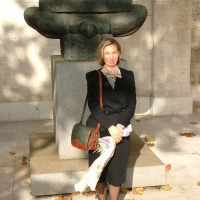
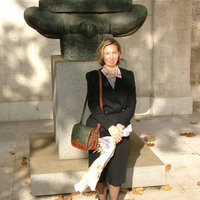



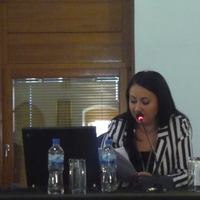

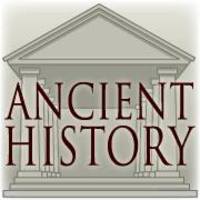


Uploads
Papers by Marjeta Šašel Kos
The collection is based on the thirteenth workshop of the F.E.R.C.AN. project (Fontes epigraphici religionum Celticarum antiquarum), which was held from the 17th to the 19th October 2014 in Lampeter, Wales.